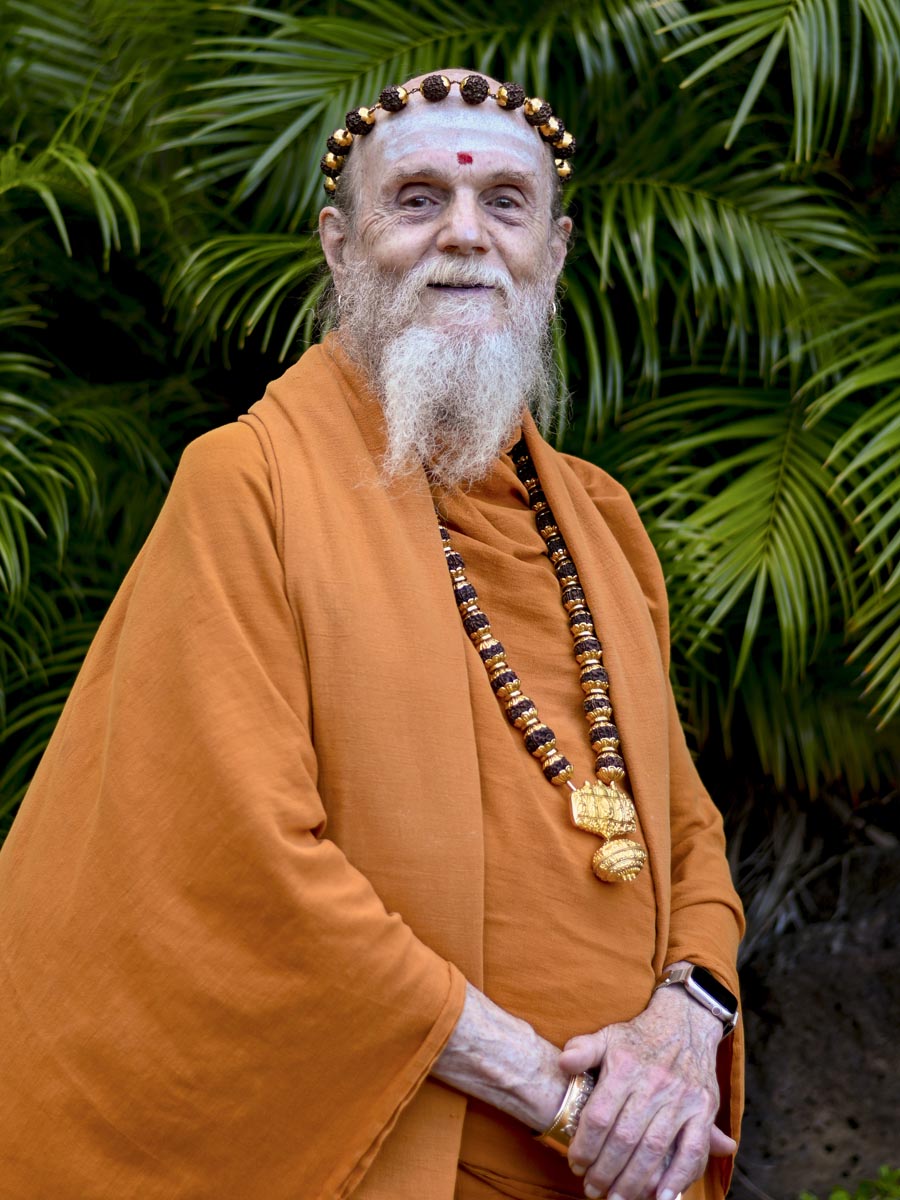Annual Guru Puja 2025
Jai Gurudeva!
On the October 20th, Mathavasi and devotees celebrated 24th year of Gurudeva’s Mahasamadhi. Here some of the photos from the puja. Aum!
Annual Guru Puja 2025 Read More »
Jai Gurudeva!
On the October 20th, Mathavasi and devotees celebrated 24th year of Gurudeva’s Mahasamadhi. Here some of the photos from the puja. Aum!
Annual Guru Puja 2025 Read More »

Today we announce our annual end-of-the-year Digital Dharma Drive.
A Message from Satguru Bodhinatha Veylanswami
November 1, 2025
Namaste and welcome to our various websites and mobile apps, through which we endeavor to provide accurate, useful and contemporary information on Hinduism.

Thanks to Digital Dharma Drive donations, the monks continued their steady push to create additional AI recordings in Satguru Sivaya Subramuniyaswami’s voice of his writings that he did not himself record. This is especially appreciated by individuals who regularly listen to audio files, such as when traveling to work. We have a new presence on Instagram, where snippets from Path to Siva and Gurudeva’s Spiritual Toolbox appear each week thanks to development and publishing tools that have been acquired. AI has been adopted by many of the monks who now use it to aid in communications, publications, web development, image creation, troubleshooting, computer learning and research tasks. Donations also cover the professional fees needed to continue to upgrade and expand our digital offerings. Our most exciting news is the completion, after 13 years of work, of our own translation and commentary of Patanjali’s Yoga Sutras. And it’s illustrated!
The material on our websites and mobile apps continues to be available for free. Our Guru, Sivaya Subramuniyaswami, insisted that all of his books as well as our other publications be available in digital formats without charging readers to access this material. For example, all issues of our magazine, Hinduism Today, are available online without cost.
We do, however, follow the model of Wikipedia of asking for donations during the last two months of the year. For fifteen years running, you have responded generously to our Digital Dharma Drive, and after another year of dynamic digital progress, we are back again with our 2025 appeal.
In our “How the Funds Are Used” page, https://ddd.himalayanacademy.com/how-the-funds-are-used/ we detail what we did with your past generosity, and what we hope to accomplish in the coming year. Digital Dharma Drive funds do not pay staff salaries or administrative overhead, since our sites are created and maintained by selfless monks who happily work for free and live simply in our remote monastery on the island of Kauai. This allows us to accomplish major projects with relatively small cost.
Ten percent of your tax-deductible contribution goes into the permanent Digital Dharma Drive Endowment, which now stands at $319,764 after fourteen years of fundraising. This follows Gurudeva’s vision that ultimately, in the future, all major aspects of our work will be supported by endowments. As the endowment accumulates, it will provide an ever-increasing income for decades to come, protecting the digital future of Hinduism, your religious heritage.
We urge you to donate today, and empower us to improve Hinduism’s global English-language resources—for the benefit of this and future generations. Our plans, projects and publications can be made manifest with your help.

Satguru Bodhinatha Veylanswami
Guru Mahasannidhanam of Kauai Aadheenam
Publisher of Hinduism Today
Digital Dharma Drive Launches Today Read More »
Satguru Bodhinatha Veylanswami gives his weekly upadesha in Kadavul Temple at Kauai’s Hindu Monastery in Hawaii. It is part of a series of talks elaborating on the inspired teachings of Satguru Śivaya Subramuniyaswami as found in his book Merging With Śiva.
“Through darshan power, the guru is able to communicate with his disciples. Information is passed on these rays of darshan. Unfoldment is guided on these rays of darshan. A beginning student cannot feel the darshan. That means he is not inwardly connected or “hooked in.” He does not have that open line. That is why the satguru often puts out some sort of intellectual book or pamphlets, to hold the intellect in check until the student goes deeper within. After deep study of the guru’s works, they then begin to feel his darshan occasionally from a distance, but not all the time.“
Spiritual Training, Part Three Read More »
Vetri Vel Muruga Arogara!!!
On the coming October 26 we will be celebrating Skanda Shasti in Kadavul Temple along with pilgrims and devotes. For those who can’t attend we will be doing a live streaming for you all to enjoy it. Above is the link for the live stream. Aum!
Skanda Shasti 2025 Read More »
On October 1, a rare and uplifting Ladies’ Workshop was held at the Spiritual Park, bringing together the amazing women who form the heart and sustaining force of Gurudeva’s and Bodhinatha’s mission in the island nation. The gathering focused on issues close to their lives—how to lovingly guide children who do not follow our path, how to balance the many daily tasks at home and at the Park, and how to find precious time for meditation amidst it all.
After the presentations, Paramacharya invited everyone to pair up and share their often-unspoken love and appreciation for one another. He began by expressing his gratitude to Premila Manick, who then responded in kind. Inspired by their example, the women turned to those beside them, offering heartfelt thanks to their friends for simply being part of their lives. The space soon filled with laughter, gentle hugs, hand-holding, and tears of joy as each felt seen and cherished.
The event concluded with vibuthi blessings. Paramacharya had brought from Kauai 23-karat gilded Rudraksha beads and a small piece of the robes Gurudeva had worn in life, presenting each woman with these sacred and deeply meaningful gifts.
Om Namasivaya Paramacharya,
I wanted to write to you on how AMAZING it was to hear and see you during the Ladies workshop today. I will most probably remember this for the rest of my life. There were so many teachings – some conscious, some unconscious.
When you said that it is important for women to know that they are seen, heard and loved for all that they do, it suddenly occurred to me that it is exactly what my mum requires. She is emotional most of the time these days, and I think it is because she does not feel seen, heard and loved. I came home today and I had a different response to her. I was more present, tolerant and understanding. All thanks to YOU. You are really untangling my karmas!!
I also really appreciated the way you demonstrated appreciation and gratitude to Kulamata Premila. There are so many profound lessons in those moments that I will love to go back to this memory and draw inspiration from it again and again.
I have changed today, I am deeply humbled by this experience and I want to convey my deepest gratitude to you.
Om
Ladies’ Workshop in Mauritius Read More »